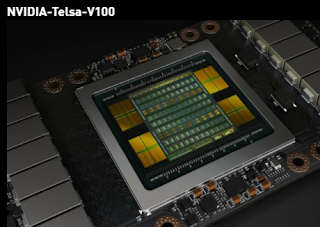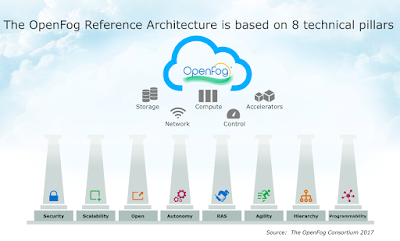Preamble
– The first part of this article presented an organizational look at the NTT
Group, which consists of five main groups and an astounding number of
subsidiary companies: 944 at last count with interests as diverse as IT
outsourcing, mobile apps, real estate, data centers, finance, construction, and
even electrical power. The second part of the article looked at NTT’s Global
Cloud Business Promotion, which aims to provide full-stack, full-lifecycle
integration from the data center, to the managed ICT layer, to the
applications.
From
its annual report, we know that the NTT Group currently generates about US$16.9
billion in overseas revenues, of which 65% is for IT infrastructure and 35% is
for application services. This breaks
down as follows:
Americas $5.9b, including 55% for IT
infrastructure and 45% for applications
EMEA $6.6b, including 60% for IT
infrastructure and 40% for applications
APAC $4.4b, including 90% for IT
infrastructure and 10% for applications
NTT
Communications
The
network resides between the data center layer and the managed ICT solutions and
it is here that NTT perhaps has its greatest strength. Inside Japan, NTT’s
fiber infrastructure, through its various
subsidiaries, is unrivaled for wholesale operations and FTTH residential
connections. The global enterprise networking segment is addressed by NTT
Communications. The second part of this
article covered the NTT Comm’s recent Global SD-WAN launch. The company is also
well-known for its Global IP Network, which is IPv4/IPv6 backbone network
connected through a single AS 2914 and offering high-speed, high-capacity IP
communications to all major countries in Europe, North America, Oceania, and
Asia. Alongside this IP backbone, NTT Comm operates a global MPLS service
that delivers Layer 3 IP-based MPLS and Layer 2 Ethernet-based VPLS in 190
countries/regions.
More
recently, NTT Com has developed a Multi-Cloud Connect service that is directly
connected to public clouds hosted in key markets across Europe, North America
and Asia Pacific. Multi-Cloud Connect currently connects to Oracle Cloud and
other third-party cloud services including Amazon Web Services (AWS), Microsoft
Azure, Office 365, Dynamics CRM Online, as well as NTT Com's private cloud
service, via a security-enhanced, private Layer 3 connection, avoiding the
public Internet.
NTT
Comm is an active participant in the subsea space. One project it has led is
the recently-completed, consortium-backed Asia Pacific Gateway (APG) optical
submarine cable network, which spans a total length of 10,400 km and leverages
100 Gbps optical transmission and digital coherent technology to deliver a
capacity of more than 54 Tbps, the highest of any network in Asia. NTT Com has
established two diverse landing points, one in the East and the other in the
West of Japan for the APG and Pacific Crossing-1 (PC-1) submarine cable which
connects between Japan and the U.S. having diverse route such as north and
south routes. The company has also implemented diverse landing points in Hong
Kong and Singapore for the APG and for the Asia Submarine-Cable Express (ASE),
which was launched in August 2012.
It
should also be noted that NTT Comm, like other companies in the group, sometimes
deploys proprietary technologies developed in-house. Earlier this year, NTT
Communications began deploying a 400 Gbps optical transmission system in its
data centers. The system raises the transmission capacity of NTT Com's core
network above 19Tbps per optical fiber, or more than double existing capacity.
The company said the 400G rate is achieved by using advanced digital-signal
processing technology developed in house.
Connecting
the pieces - Dimension Data
Dimension
Data, which was founded in 1983, is probably the best-known technology firm
from South Africa having built a global reputation for excellence in networking
integration, IT management and data centers. Over the years, Dimension Data
expanded into markets worldwide, sometimes acquiring local integration
companies, including Australia's ComTech. Dimension Data has also served as
Cisco Systems exclusive distributor in South Africa. The company reports an
annual turnover of US$7.5 billion. It now has offices in 52 countries and
30,000 employees,
In
2010, the NTT Group acquired Dimension Data for £2.1 billion ($3.2 billion).
Since then, NTT has preserved Dimension Data as an independent subsidiary.
Dimension Data still maintains its headquarters in Johannesburg with mostly
local management. Jeremy Ord, who served as Managing Director since its
inception, continues on as Executive Chairman. In 2016, Dimension Data
appointed Jason Goodall as Group Chief Executive Officer. Goodall previously
served as Dimension Data's Group COO, where he has been responsible for the
regions and several global functions including sales, marketing, Group
Information Services (GIS), HR and commercial finance. Goodall is a veteran of
Dimension Data having served many roles during his 18-year career with the
company.
Even
while under the NTT umbrella, Dimension Data has persevered in its strategy of
acquiring other integration companies to add to its team and customer base.
NTT
Data
The
NTT Group has another global IT integration and management company. NTT
Data, which was founded in 1967 and is based in Tokyo, maintains business
operations in 42 countries. For 2016, NTT Data posted annual revenue of US$14.6
billion. It currently has about 120,000 employees. Unlike Dimension Data, which
is a fully-owned subsidiary, the NTT Group holds a 54% equity stake in NTT
Data.
(NTT
Comware is another IT integration subsidiary, although its operations are
focused on the physical assets of the NTT Group itself rather than outside
customers)
Overseas
acquisitions are also a key element of NTT Data's strategy in Europe, the
United States and APAC. In 2016, NTT DATA acquired Dell Services, an IT
services provider recognized for its depth in vertical industries and for its
offerings around infrastructure services, cloud services, application services,
and business process outsourcing. The purchase price was reported at $3.05
billion. This deal significantly increased NTT DATA’s presence in North America
particularly in healthcare and insurance industries. Prior to 2009, the Dell Services
groups was known as Perot Systems, a business consultancy founded by H. Ross
Perot.
Both
NTT Group and Dimension Data identify digital transformation as a key business
opportunity. Enterprise companies are under pressure to evolve their IT
infrastructure or be crushed by more agile competitors. A big part of this
revolves around process automation and finding cloud-optimised software that
streamlines operations. Hybrid public/private infrastructure is required as is
expertise in rapidly evolving open source technologies, such as blockchain. It
is here that theses sister companies provide overlapping services and both have
access to NTT Group's vast resources.
For
example, earlier this year, Dimension Data and NTT Com agreed to explore how to
deliver a unified cloud experience to clients through greater collaboration
within NTT, initially via closer integration of the Dimension Data and NTT Com
cloud IaaS platforms.
 Orange Business Services offers many IoT connectivity options, including LoRa. Use cases range from supply chain and smart inventory management to digital operations, such as predictive maintenance, employee safety and facility and equipment management.
Orange Business Services offers many IoT connectivity options, including LoRa. Use cases range from supply chain and smart inventory management to digital operations, such as predictive maintenance, employee safety and facility and equipment management. Orange Business Services offers many IoT connectivity options, including LoRa. Use cases range from supply chain and smart inventory management to digital operations, such as predictive maintenance, employee safety and facility and equipment management.
Orange Business Services offers many IoT connectivity options, including LoRa. Use cases range from supply chain and smart inventory management to digital operations, such as predictive maintenance, employee safety and facility and equipment management.




























































